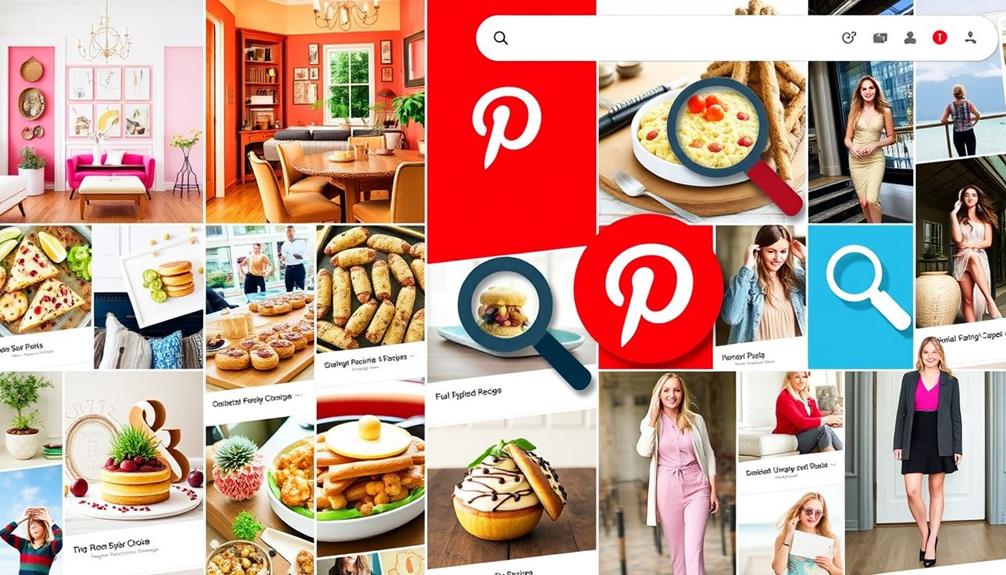Holistic SEO
JavaScript SEO: Optimizing Dynamic Content for Search Engines
Stay ahead in search rankings by mastering JavaScript SEO techniques for dynamic content, and uncover powerful strategies to enhance your visibility.

JavaScript SEO is essential for making certain your dynamic content ranks well in search engines. Since search engines like Google face challenges with crawling and indexing JavaScript, you'll want to optimize your site's performance. Implement server-side rendering for faster load times and easier indexing. Avoid blocking your .js files in robots.txt to enhance crawlability. Use tools like Google Search Console to monitor indexing issues and guarantee proper rendering. By focusing on loading speed and user engagement, you can greatly improve your visibility. Keep going, and you'll discover more strategies to enhance your JavaScript SEO.
Key Takeaways
- Ensure JavaScript files are crawlable by updating robots.txt to allow search engine access.
- Implement server-side rendering (SSR) to deliver pre-rendered HTML, enhancing crawlability and user experience.
- Utilize clean and descriptive URLs to improve navigation and search engine visibility.
- Generate HTML snapshots or use the '' tag to aid indexing of dynamic content.
- Monitor and optimize loading speeds, as fast-loading pages significantly improve user engagement and conversions.
What Is JavaScript SEO?
When it comes to optimizing websites that use JavaScript, understanding JavaScript SEO is fundamental. This practice focuses on guaranteeing that search engines can effectively crawl, render, and index dynamic content generated by JavaScript.
While platforms like Google have improved their ability to process JavaScript, challenges still persist, particularly with how dynamically generated content is indexed. Furthermore, as AI advancements raise significant privacy concerns, it's important to guarantee that any data collection practices associated with SEO comply with data protection regulations to maintain user trust.
Common issues in JavaScript SEO often arise when .js files are blocked in the robots.txt file, which prevents search engines from accessing essential scripts needed to render your content. To overcome this, implementing best practices is imperative.
For example, using server-side rendering (SSR) or dynamic rendering allows you to provide fully rendered HTML content to search engines while keeping an interactive experience for users.
Additionally, utilizing tools like Google Search Console can help you verify whether your JavaScript-generated content is being indexed correctly. By addressing any potential issues promptly, you'll enhance your website's visibility in search results.
Ultimately, mastering JavaScript SEO is crucial for guaranteeing your dynamic content reaches your audience effectively and contributes to your technical SEO efforts.
Crawling and Indexing JavaScript

When it comes to crawling and indexing JavaScript, understanding Googlebot's process is essential.
Recent issues like the CrowdStrike outage highlight the importance of guaranteeing your site's accessibility. You need to confirm that your .js files aren't blocked in your robots.txt, as this can hinder rendering and indexing.
Googlebot Crawling Process
Understanding Googlebot's crawling process is essential for optimizing your JavaScript-based content. Googlebot processes JavaScript in three phases: crawling, rendering, and indexing. Initially, it queues URLs for processing without executing JavaScript or CSS files directly. This means that if your JavaScript files are blocked in the robots.txt file, Googlebot can't access them, hindering effective crawling and indexing of dynamic content.
To guarantee a smoother experience, prioritize loading dynamic content. Critical elements should render immediately to avoid lazy loading delays that can negatively impact indexing. You can use Google Search Console (GSC) to verify that your pages are rendering and indexed correctly. This tool allows you to check specific URLs using the site: command.
Here's a quick overview of the crawling process:
| Phase | Description | Importance |
|---|---|---|
| Crawling | Queuing URLs for processing | Initial step for indexing |
| Rendering | Deferring JavaScript execution due to resources | Affects how content is indexed |
| Indexing | Storing crawled data for search results | Essential for SEO visibility |
Make sure you're optimizing each phase to enhance your SEO strategy!
Rendering JavaScript Content
Rendering JavaScript content effectively is essential for ensuring search engines can crawl and index your website properly. Googlebot processes your JavaScript content in three phases: crawling, rendering, and indexing. During crawling, it queues URLs rather than executing JavaScript files immediately. This deferred rendering can lead to indexing challenges, especially if your content doesn't load quickly or isn't accessible.
Understanding how credit card trends impact online businesses can also play a role in optimizing your site's performance.
To enhance SEO performance, consider using server-side rendering (SSR). SSR delivers pre-rendered HTML to clients, simplifying the crawling and indexing process for search engines. This approach allows search engine bots to access your content more efficiently.
Additionally, you can utilize Google Search Console to verify that your pages render correctly. It's a valuable tool for analyzing crawled pages and ensuring that JavaScript snippets are indexed properly.
Another method is dynamic rendering, where you serve a server-rendered version to search engine bots while your users see the client-side version. While this approach can address JavaScript indexing issues, it's not a long-term solution.
Focusing on effective rendering techniques will ultimately help your site perform better in search results.
Indexing Challenges and Solutions
Indexing JavaScript content poses substantial challenges for many websites, as search engine crawlers often overlook dynamically generated elements. This oversight can lead to poor indexing and negatively impact your SEO performance.
To address these indexing challenges, consider generating HTML snapshots or utilizing the '' tag. These methods can help crawlers recognize and index your JavaScript-rendered content more effectively. Additionally, diversifying your content strategy, much like diversifying a retirement portfolio with gold, can help mitigate risks associated with poor indexing benefits of converting 401k to Gold IRA.
Googlebot processes JavaScript in three phases: crawling, rendering, and indexing. Ensuring your critical content is rendered and indexed correctly during these phases is essential. Implementing server-side rendering (SSR) can greatly enhance the crawlability of your dynamic content by delivering pre-rendered HTML directly to search engines.
Additionally, submitting an XML sitemap is a great way to help search engines discover your JavaScript content. However, keep in mind that the effectiveness of indexing relies heavily on maintaining a proper HTML structure and employing effective cross-linking practices.
Rendering Methods Explained

When it comes to rendering methods, understanding the benefits of Server-Side Rendering (SSR) can greatly boost your site's SEO.
Implementing effective security measures, such as AI security, can also play an essential role in safeguarding your dynamic content and enhancing your site's overall performance.
On the other hand, Client-Side Rendering (CSR) presents challenges that might hinder your content's visibility.
Let's explore how each method impacts your site's performance and search engine indexing.
Server-Side Rendering Benefits
Server-Side Rendering (SSR) offers a powerful solution for improving your website's SEO by generating HTML content directly on the server.
This process guarantees search engine bots can access fully rendered pages, enhancing your SEO performance and indexing efficiency. Additionally, implementing SSR can greatly boost your site's user experience and engagement by providing a seamless browsing experience.
Here are some key benefits of implementing SSR:
- Improved Crawlability: By delivering pre-rendered HTML, critical content becomes visible to search engines immediately, helping with indexing.
- Enhanced User Experience: SSR greatly reduces load times and minimizes layout shifts, leading to lower bounce rates and satisfied users.
- Avoiding JavaScript Timeout Errors: SSR reduces reliance on client-side JavaScript for the initial page load, preventing issues that can block content from being indexed.
- Framework Support: Tools like Next.js and Gatsby streamline the implementation of SSR, making it easier for developers to create SEO-friendly, dynamic content.
Client-Side Rendering Challenges
Client-side rendering (CSR) presents several challenges that can hinder your website's SEO performance. Since CSR relies on the browser to execute JavaScript, it creates a minimal initial HTML structure that may leave search engines struggling to access dynamically generated content.
For instance, during a Google Crawl, if essential content is loaded asynchronously or requires user interaction, it might remain missing during the initial crawl, leading to slower indexing times. Additionally, the effectiveness of security systems, such as the value of home security systems, can be compromised if users can't easily find relevant information due to poor SEO practices.
Moreover, internal linking becomes less effective with CSR. Googlebot needs to discover links through rendered content rather than relying on static HTML, which can complicate how your site's architecture is understood.
If you implement techniques like lazy loading, search engines mightn't prioritize or even see the content that's not immediately visible upon page load.
To optimize your website for SEO best practices, consider these challenges of client-side rendering. JavaScript requires careful handling to guarantee that your content is accessible and indexable, keeping your site's performance in line with your SEO goals.
Balancing dynamic content with the needs of search engines is vital for maintaining visibility in search results.
Best Practices for JavaScript SEO

To guarantee your JavaScript-driven website ranks well in search engines, it's important to adopt best practices for JavaScript SEO. Implementing effective strategies enhances your site's visibility and user engagement, making it fundamental for success in a competitive online landscape.
Here are four key strategies you should implement:
- Allow Crawling of JavaScript Files: Update your robots.txt to make sure search engines can access your JavaScript files. This is essential for effective indexing of dynamic content.
- Implement Server-Side Rendering (SSR): By delivering pre-rendered HTML to users and search engines, you greatly enhance load times and overall SEO performance. This approach improves your site's visibility in search engine results and can lead to higher conversion rates, similar to how effective offers can boost customer interest.
- Utilize Clean and Descriptive URLs: Stick to static URLs instead of hash-based ones. Clean URLs enhance user experience and are favored by search engines.
- Optimize Loading Times: Defer non-essential JavaScript and prioritize critical content. This helps prevent indexing issues and improves perceived load speed, which is crucial for user engagement.
Common JavaScript SEO Challenges

Maneuvering the world of JavaScript SEO presents several common challenges that can impact your website's visibility. One major hurdle is the dynamic content generated by JavaScript, which may not be visible in the initial HTML source. This can hinder search engines from effectively indexing vital information.
Additionally, search engine crawlers often struggle with JavaScript-rendered links and menus, leading to incomplete indexing of your site's content. To guarantee software meets high-quality standards and requirements, best practices in software quality assurance can be beneficial for optimizing your approach.
To enhance your SEO, it's important to utilize proper HTML structure for key content. Relying solely on JavaScript can make it difficult for search engines to prioritize visible elements, ultimately affecting your site's ranking.
Submitting an XML sitemap can help search engines discover your JavaScript content; however, it can't compensate for poor cross-linking practices that might limit your site's visibility.
Many misunderstand the capabilities of search engine bots, mistakenly believing that JavaScript-only content can boost SEO performance. In reality, a balanced approach that incorporates HTML is vital for effective JavaScript SEO.
Tools for JavaScript Optimization

When optimizing JavaScript for SEO, leveraging the right tools can make a considerable difference in your site's visibility.
Proper hydration strategies to optimize metabolism during the climb can also enhance the performance of your website by guaranteeing it runs smoothly.
Here are four key tools to contemplate:
- Prerender: This tool generates HTML snapshots of your JavaScript-rendered pages, making them more accessible for search engines to crawl and index effectively.
- Google Search Console (GSC): Essential for monitoring your JavaScript content's indexing status, GSC helps guarantee that your pages render correctly for crawlers.
- Lighthouse: An open-source tool, Lighthouse evaluates the performance of your JavaScript-heavy websites, providing insights into load times and rendering efficiency that enhance your SEO outcomes.
- Frameworks like Next.js and Gatsby: These support server-side rendering (SSR), allowing you to serve pre-rendered HTML to search engines, which greatly improves the SEO of your dynamic content.
Enhancing User Experience

Optimizing your JavaScript not only enhances SEO but also plays a significant role in elevating user experience. Fast-loading pages are essential; studies reveal that a mere 1-second delay can reduce conversions by 7%.
To keep users engaged, make certain your site has a clear and intuitive navigation structure, making it easier for visitors to find quality content. This not only boosts user experience but also positively impacts your SEO rankings.
In an era of mobile-first indexing, implementing responsive design is important. Your website should adapt seamlessly to various screen sizes, enhancing user engagement on mobile devices.
Additionally, dynamic rendering can help guarantee that search engines access your content effectively while delivering a smooth experience for users.
Quality content that meets user needs is critical for satisfaction and encourages longer dwell times, signaling content relevance to search engines.
Regular updates and maintenance of your website build credibility and trustworthiness, improving user retention and increasing the likelihood of repeat visits.
Future Trends in JavaScript SEO

The future of JavaScript SEO is rapidly evolving, driven by the increasing importance of mobile-first indexing and user experience. As search engines prioritize mobile versions of websites, you'll need to adapt your JavaScript practices accordingly.
Here are four key trends to watch:
- Mobile-First Indexing: Optimize your JavaScript for mobile experiences, guaranteeing that your content is easily accessible on smaller screens.
- Progressive Web Apps (PWAs): Implement SEO-friendly practices within PWAs, which combine the best of web and mobile apps, making user engagement seamless.
- Structured Data: Use schema markup to enhance search visibility for your JavaScript-rendered content, helping search engines better understand your site.
- Fast-Loading Pages: Prioritize efficient JavaScript code to improve performance metrics, as search algorithms increasingly reward sites with fast-loading pages.
Additionally, employing techniques like server-side rendering and dynamic rendering will become essential for maintaining search rankings.
As you adapt to these evolving SEO standards, keep user experience at the forefront to guarantee your website remains competitive in the ever-changing landscape of JavaScript SEO.
Conclusion
In summary, mastering JavaScript SEO is essential for your website's visibility. Did you know that nearly 70% of websites rely on JavaScript frameworks? This statistic highlights the importance of optimizing your dynamic content for search engines. By implementing best practices and leveraging the right tools, you can enhance both your site's performance and user experience. Stay ahead of the curve, and make sure your JavaScript content is easily crawled and indexed to maximize your online presence.
Chris, SEO and Keywords Expert & Author: Chris lives and breathes SEO. With a deep understanding of keyword research and strategy, he’s our go-to guru for everything related to search rankings. Chris has a knack for identifying trends and opportunities in the SEO world, making him an invaluable asset to our team and our clients.
Holistic SEO
Amazon SEO: Standing Out in the World’s Largest Marketplace
Discover how mastering Amazon SEO can elevate your listings and boost sales—unlock the secrets to thriving in the world’s largest marketplace.

To stand out in Amazon's immense marketplace, you must master Amazon SEO. Start by optimizing your product listings with relevant keywords in titles and descriptions. The A9 algorithm favors listings that are both relevant and perform well, so track your sales and conversion rates. Use compelling images and encourage positive customer reviews to build trust and increase visibility. Regularly assess your performance metrics and adapt your strategy based on what's working. With the right approach, you can enhance your listings and drive sales effectively. There's much more essential information you need to succeed at your fingertips.
Key Takeaways
- Optimize product listings with relevant keywords in titles and descriptions to enhance visibility in Amazon's search results.
- Utilize high-quality images and encourage positive customer reviews to improve credibility and increase conversion rates.
- Leverage the A9 algorithm by focusing on both relevance and performance factors like sales volume and customer feedback.
- Conduct thorough keyword research and competitor analysis to target high-traffic, low-competition keywords effectively.
- Regularly monitor performance metrics to refine strategies and maintain competitive rankings in Amazon's marketplace.
Importance of Amazon SEO
While you may already know that Amazon is one of the largest online marketplaces, understanding the significance of Amazon SEO is fundamental for maximizing your product's potential. Effective Amazon SEO enhances your product listings' visibility, driving higher traffic and leading to increased sales and brand recognition.
With an average conversion rate of 13.3% on Amazon, compared to just 3.75% for Google Ads, it's clear that optimizing your listings is imperative. Additionally, just as background checks enhance workplace safety in hiring processes, optimizing your product listings can create a safer and more trustworthy shopping environment for consumers.
When you rank higher in search results, you grab more consumer attention and build trust. Positive reviews and high-quality images are essential components of this optimization process, influencing both search rankings and customer purchasing decisions. Utilizing keyword research tools helps you identify the most effective keywords to include in your listings, boosting your visibility even further.
However, it doesn't stop there. Continuous optimization and monitoring of your product listings are key, as changes in Amazon's search algorithm can impact your visibility.
Understanding the A9 Algorithm

Understanding the A9 algorithm is essential for any seller looking to thrive on Amazon. This powerful algorithm ranks product listings primarily based on two factors: relevance and performance.
Relevance is largely determined by keyword usage, so it's important to strategically place keywords in your titles, descriptions, and bullet points. The better your keyword placement, the higher your visibility on Amazon. Additionally, having a methodical approach to your listing optimization can greatly enhance your product's discoverability, akin to the thorough testing processes in quality assurance practices.
Performance, on the other hand, encompasses sales volume and conversion rates. The A9 algorithm favors products that not only match user search queries but also sell well and convert effectively.
Additionally, customer reviews play a significant role in A9 rankings—higher ratings and positive feedback enhance your credibility and improve your search result positions.
Keep in mind that the A9 algorithm is constantly evolving. Staying updated on its changes and adapting your strategies is important to maintain competitive rankings.
Factors like stock availability and fulfillment speed also influence the algorithm, impacting the overall customer experience and likelihood of purchase. By understanding these elements, you can optimize your listings and improve your chances of success on Amazon.
Key Factors for Optimization

To enhance your Amazon listings effectively, focus on several key factors that directly influence your product's visibility and sales performance.
First, make certain you're incorporating relevant keywords in your product titles and descriptions. This alignment with user search queries is vital for effective Amazon SEO. The Amazon A9 algorithm prioritizes listings that show strong keyword relevance, so be certain to use backend keywords to improve discoverability.
Additionally, leveraging email marketing strategies can help in promoting your products outside of Amazon, driving more traffic to your listings.
Next, invest in high-quality product images. Amazon recommends images to be at least 1,000 pixels on the longest side for ideal resolution. Great visuals can greatly increase click-through rates and conversions.
Additionally, positive customer reviews and high ratings are essential. Not only do they build trust with potential buyers, but they also influence your search rankings. The A9 algorithm tends to favor listings with better reviews, so encourage satisfied customers to leave feedback.
Effective Keyword Research

To boost your product's visibility on Amazon, mastering effective keyword research is key.
You'll want to explore various keyword tools, adopt a long-tail keyword strategy, and analyze your competitors' keywords.
Additionally, employing keyword clustering techniques can help in organizing your content around relevant themes.
With these tactics, you'll enhance your listings and improve your chances of converting shoppers into buyers.
Keyword Tools Overview
Effective keyword research is the backbone of optimizing your Amazon product listings. By identifying high-traffic, low-competition keywords, you can greatly boost your visibility and sales.
Utilizing the right tools can streamline this process and make your efforts more effective. Additionally, understanding the emotional impact of your product descriptions can resonate with potential buyers, making them more likely to convert.
Here are four key tools to evaluate:
- Helium 10: This powerful tool offers insights into keyword performance, search volume, and trends, helping you make informed decisions.
- Jungle Scout: A favorite among sellers, it provides data on consumer search behavior and competitive rankings, allowing you to spot opportunities.
- MerchantWords: It specializes in revealing popular search terms used by actual Amazon shoppers, giving you a better understanding of what buyers are looking for.
- Amazon's Search Bar: Don't overlook the suggestions that pop up as you type; they reflect real-time consumer search behavior and can inspire valuable keyword ideas.
Incorporating these keywords in your product titles, bullet points, and descriptions aligns your content with the A9 algorithm's focus on relevance.
Regularly refining your keyword strategies based on performance metrics will help you maintain competitive rankings in the ever-evolving marketplace.
For additional insights into maneuvering challenges, reflect on supporting children through divorce as an emotional parallel to connecting with your audience.
Long-Tail Keyword Strategy
Long-tail keywords can be a game-changer for your Amazon SEO strategy. These phrases, typically containing three or more words, target specific search queries, allowing you to reach a more defined audience intent. By focusing on long-tail keywords, you're likely to face less competition, which can lead to higher conversion rates.
Additionally, understanding consumer behavior can enhance your keyword selection, as certain trends may correlate with customer interests, similar to how astrological compatibility can influence relationships.
Utilizing tools like Helium 10 or Jungle Scout helps you identify long-tail keywords with substantial search volume and low competition, enhancing your product visibility in Amazon's search results. Customers searching for these keywords are often further along in the buying process, meaning they've a higher click-through rate (CTR).
Incorporating long-tail keywords into your product titles, bullet points, and descriptions is essential for improving your relevance score and positively impacting your ranking within Amazon's A9 algorithm.
Don't forget to regularly analyze performance metrics for your long-tail keyword strategies. This allows you to fine-tune your listings and optimize for keywords that drive the most traffic and conversions over time.
Competitor Keyword Analysis
Uncovering the keywords that top-performing competitors use can greatly boost your Amazon SEO strategy. By conducting a thorough competitor keyword analysis, you can identify gaps and opportunities that enhance your product listings.
Here's how you can approach it:
1. Utilize Tools: Use tools like Helium 10 or Jungle Scout to examine competitors' keyword rankings. This helps you target high-traffic, low-competition keywords effectively.
Additionally, leveraging insights from innovation and design excellence can inspire unique product positioning.
2. Analyze Listings: Scrutinize competitors' product titles and descriptions. Look for successful phrasing and keyword placement that can improve your own listings.
3. Monitor Trends: Regularly check competitors' keyword strategies. Staying updated on shifts in consumer search behavior allows you to adjust your SEO tactics promptly.
4. Enhance Visibility: By leveraging insights from competitor keyword analysis, you can boost your product visibility, drive more traffic to your listings, and ultimately increase conversion rates on Amazon.
Implementing these techniques will put you ahead in the competitive marketplace. Your focus on effective keyword research won't only refine your Amazon SEO but also elevate your products' performance.
Crafting Compelling Product Titles

Your product title is often the first impression potential buyers have, making it vital to craft it thoughtfully. For effective Amazon SEO, incorporate primary keywords that enhance search visibility and relevance. Ideally, keep your title around 80 characters to maximize engagement.
Additionally, consider including essential items that relate to your product's use or care, as these can further attract interest and inform buyers about what they need, similar to essential items for a home cleaning kit.
Focus on key details like brand name, product type, size, color, and unique features. This not only aids in searchability but also grabs potential buyers' attention. By placing keywords strategically at the beginning of your title, you can greatly boost click-through rates, as Amazon's algorithm favors listings that match user search queries closely.
Concise yet descriptive titles improve user experience, allowing customers to quickly grasp your product offering. This clarity increases the likelihood of conversions, a vital goal in a competitive marketplace.
Regularly monitor and update your product titles based on performance metrics and keyword trends. This practice guarantees your listings remain relevant and maintain visibility over time.
Leveraging Customer Reviews

When you leverage customer reviews, you're not just boosting your product's visibility; you're also building trust and credibility with potential buyers.
Positive feedback encourages more user action, while effectively managing any negative perceptions can turn a setback into an opportunity.
For example, the value of home security systems is often highlighted in customer discussions, showcasing how effective security measures enhance peace of mind.
Building Trust and Credibility
Building trust and credibility is essential for any seller on Amazon, and positive customer reviews are a powerful tool in achieving this.
Just as understanding narcissistic traits can help recognize unhealthy relationships, focusing on accumulating feedback can improve your product's visibility and sales potential.
Here's how you can leverage customer reviews effectively:
- Encourage Reviews: Follow up with customers post-purchase to ask for feedback. Statistics show that 68% of consumers are likely to leave a review if prompted.
- Build Trust: High ratings not only reflect excellent customer service but also enhance your credibility in the marketplace, making shoppers more likely to choose your product.
- Respond to Negative Reviews: Addressing negative feedback promptly can turn a dissatisfied customer into a loyal one, showcasing your commitment to excellent customer service.
- Higher Rankings: Products with at least five reviews enjoy a 270% increase in conversion rates compared to those with none, as Amazon's algorithm rewards better customer feedback with higher rankings in search results.
Encouraging Positive User Action
Encouraging positive user action through customer reviews can transform your Amazon presence and greatly boost sales. Positive customer reviews markedly enhance your product credibility—72% of consumers trust a brand more when they see good reviews. Products that gather at least five reviews can earn 4.2 times more sales than those without any feedback.
To encourage customers to leave reviews, consider sending follow-up emails after purchases; studies show this can increase review rates by up to 50%.
Prioritize high-quality customer service and guarantee product satisfaction, as 95% of customers share experiences after negative interactions. Proactive engagement with your customers fosters positive reviews.
Utilizing Amazon's "Request a Review" feature simplifies the process of gathering feedback. This helps maintain a steady influx of positive reviews, which can boost your visibility and drive sales.
Remember, each positive review not only enhances your product's credibility but also helps potential buyers feel more confident in their purchasing decisions.
Managing Negative Perceptions Effectively
Steering through negative perceptions is essential for maintaining a strong Amazon presence. Effectively managing customer perceptions not only mitigates the impact of negative reviews but also enhances your seller reputation.
Here's how you can leverage customer reviews:
- Respond Promptly: Address negative feedback with empathy. Over 70% of consumers trust a brand more when they see it respond to reviews.
- Encourage Positive Feedback: Use follow-up communications to ask customers for product reviews. About 68% of consumers are likely to leave feedback if prompted.
- Utilize Constructive Feedback: Turn dissatisfied customers into loyal ones by resolving issues swiftly. An impressive 95% of unhappy customers will return if their problems are addressed.
- Implement the Request a Review Feature: This tool streamlines feedback collection, helping you maintain a steady influx of reviews and improve your average rating.
Monitoring Performance Metrics
To succeed in Amazon SEO, you need to keep a close eye on performance metrics like organic search rankings, conversion rates, and sales data. Monitoring performance metrics is essential for evaluating the effectiveness of your strategies and making data-driven adjustments. Tools like Amazon Seller Central provide valuable insights into key performance indicators, helping you track engagement metrics and customer behavior effectively.
Regular analysis of click-through rates (CTR) can pinpoint which keywords and listings perform well, allowing for targeted optimization efforts. Additionally, tracking customer reviews and ratings impacts visibility and offers insights into customer satisfaction and areas for improvement.
Here's a quick overview of performance metrics to monitor:
| Metric | Importance | Actionable Insights |
|---|---|---|
| Organic Search Rankings | Shows visibility in search results | Improve SEO tactics |
| Conversion Rates | Indicates sales effectiveness | Adjust product listings or prices |
| Click-Through Rates | Measures engagement | Optimize titles and images |
| Customer Reviews | Reflects customer satisfaction | Enhance product quality or service |
Adjusting your strategies based on these metrics guarantees continuous optimization, helping you thrive in the competitive Amazon marketplace.
Future Trends in Amazon SEO

As you look ahead in the evolving landscape of Amazon SEO, several key trends are set to reshape how sellers optimize their listings. Staying current with these trends will be vital for success in the competitive marketplace.
- Voice Search Optimization: With more consumers using voice-activated devices, integrating natural language keywords into your listings will become essential for visibility.
- Video Content: Engaging video showcases can increase conversion rates by up to 80%. Incorporating videos will be a game changer for product listings.
- AI-Driven Tools: These tools will streamline keyword analysis and performance tracking, providing deeper insights into consumer behavior and helping refine your optimization processes.
- Adaptation to the Amazon A10 Algorithm: Continuous updates to this algorithm will require you to focus on relevance and performance metrics regularly, ensuring your listings maintain high search rankings.
As personalized product recommendations powered by machine learning become more prevalent, aligning your listings with targeted consumer preferences will enhance the shopping experience.
Embracing these trends will position you ahead in the dynamic world of Amazon SEO.
Advanced SEO Strategies

With the landscape of Amazon SEO rapidly changing, implementing advanced strategies can greatly enhance your product listings. One effective approach is utilizing Enhanced Brand Content (EBC) or A+ Content, which creates visually rich listings and can lead to a 5-10% increase in conversion rates.
Thorough keyword research is vital, so use tools like Helium 10 and Jungle Scout to identify high-traffic keywords. This will enhance your visibility and drive more organic traffic to your listings.
Additionally, dynamic pricing strategies based on competitor analysis can optimize your listings. Competitive pricing considerably influences Amazon's A9 algorithm rankings, making it essential for better performance.
Don't forget to regularly analyze your performance metrics, including conversion rates and click-through rates. This allows you to adapt your SEO strategies based on real-time data and market trends.
Finally, consider leveraging Amazon Advertising (PPC) to boost visibility and gather valuable data on keyword performance. This information can help inform your long-term SEO strategies and guarantee your product listings remain competitive in the ever-evolving marketplace.
Conclusion
In the bustling marketplace of Amazon, mastering SEO is like finding a hidden treasure. By understanding the A9 algorithm and optimizing your listings, you'll rise above the noise. Think of effective keyword research as your compass, guiding shoppers to your products. As you craft compelling titles and harness the power of customer reviews, you're not just selling items—you're creating experiences. Stay ahead of trends and embrace advanced strategies, and watch your sales soar like a kite in the wind.
Chris, SEO and Keywords Expert & Author: Chris lives and breathes SEO. With a deep understanding of keyword research and strategy, he’s our go-to guru for everything related to search rankings. Chris has a knack for identifying trends and opportunities in the SEO world, making him an invaluable asset to our team and our clients.
Holistic SEO
Pinterest Seo: Tapping Into Visual Search Potential
Crafting a powerful Pinterest SEO strategy can unlock visual search potential, but there are key tactics you won’t want to miss. Discover them now!

Mastering Pinterest SEO lets you tap into the immense potential of visual search, driving engagement and boosting your brand visibility. Focus on high-quality, eye-catching images and use keyword-rich descriptions to make your pins discoverable. Consistent branding and a cohesive aesthetic help attract your target audience. Regularly update your boards and engage with your community to encourage interaction. Leverage Pinterest analytics to refine your strategies and understand what resonates with users. By optimizing for visual search, you can enhance product discovery and ultimately drive sales. Stick around to uncover even more effective tips and tactics!
Key Takeaways
- Optimize pins with relevant keywords and high-quality images to enhance visual search discoverability and engagement.
- Utilize Pinterest's visual search tool to increase user interaction and attract users seeking specific solutions.
- Maintain a consistent visual identity across all pins and boards to boost brand recognition and authority.
- Regularly analyze Pinterest Analytics to refine content strategies based on audience preferences and engagement metrics.
- Create engaging, keyword-rich board descriptions to improve content visibility and attract targeted demographics.
Overview of Pinterest for Business
When it comes to harnessing the power of Pinterest for your business, understanding its unique features is essential. This platform isn't just a social network; it's a visual search engine that attracts over 450 million monthly active users.
With approximately 40% of its users based in the US, it offers a significant opportunity for targeting American consumers. By engaging with pins and boards, potential customers actively seek content that resonates with their interests.
Additionally, many businesses are leveraging Pinterest to share healthy lifestyle blogs that inspire and provide practical wellness tips. To make the most of Pinterest marketing, you need to optimize your content effectively.
Start by using relevant keywords in your pin descriptions and titles, which will enhance visibility and drive traffic to your website. High-quality images are vital; they grab attention and encourage users to click through to your product pages.
With about 2.5 billion monthly page views, the potential for exposure is immense.
Optimizing Your Professional Profile

A compelling professional profile on Pinterest is vital for standing out in a visually-driven marketplace. To make the most of your Pinterest account, start by using a business logo and crafting a keyword-rich bio that clearly communicates your brand. This not only enhances brand recognition but also drives traffic to your site.
Additionally, utilizing effective keyword clustering and topic clustering can greatly improve your content discoverability on the platform.
Next, focus on optimizing your images. High-quality visual content is more likely to grab attention and be shared, increasing your reach. Pin images of your products or services that resonate with what users are searching for.
Don't forget to include active links in your profile description. This boosts your credibility and makes it easier for users to visit your website for more information.
Additionally, optimize your board titles and descriptions with relevant content to improve search visibility. This helps users discover your profile more easily.
Regularly updating your profile and boards with fresh content is essential for keeping your audience engaged and interested.
Content Strategy and Community Engagement

Optimizing your professional profile sets the stage for a successful content strategy on Pinterest. Start by creating boards that reflect your brand themes, using engaging images with keyword-rich descriptions. This approach not only enhances your visibility in search results but also improves the overall user experience.
Additionally, consider leveraging top platforms for freelance gigs to create content that aligns with your expertise and interests.
Engaging with the Pinterest community is vital for fostering connections. Consider running contests and promotions, or encourage user-generated content to create a sense of belonging among your followers. This community engagement can greatly increase your brand exposure and interaction.
Regularly pinning high-quality images and maintaining a consistent aesthetic across your boards attracts your target audience. When users find your content visually appealing, they're more likely to share and repin, amplifying your reach.
Understanding Pinterest's largely female user base allows you to tailor your content strategy more effectively, resonating with your audience.
Additionally, utilize Pinterest analytics to monitor engagement metrics. This data helps you optimize future content strategies, ensuring you stay aligned with trends and audience preferences.
Driving Sales Through Pinterest

Harnessing the power of Pinterest can greatly boost your sales by transforming visual appeal into purchasing decisions. With its strong Pinterest SEO, your business can effectively tap into the platform's immense potential for driving sales. Users flock to Pinterest for product discovery, and with approximately 87% of them making purchases after seeing a product, your chances of converting interest into revenue are significant.
Additionally, understanding the importance of hydration strategies in different contexts can enhance your content approach on the platform.
To maximize user engagement, focus on creating engaging content that includes high-quality images. Infographics, eye-catching visuals, and well-designed pins can encourage users to pin and share your products, expanding your brand's reach.
Don't forget to include essential information like prices and availability in your pins. Clear calls-to-action can enhance engagement and lead users towards making a purchase.
Additionally, Pinterest's unique visual search capabilities enable users to discover similar products effortlessly. By optimizing your pins for visual search, you can increase the likelihood of users finding and ultimately buying your items.
Leveraging Pinterest Analytics

Utilize Pinterest Analytics to access valuable insights that can greatly enhance your marketing strategy. By diving deep into the data, you can evaluate your engagement metrics—such as impressions, saves, and click-through rates—to determine how well your pins and boards are performing.
Understanding ethical considerations in data usage is also crucial as it guarantees that your marketing practices align with privacy rights and regulations.
Here are three key benefits of leveraging Pinterest Analytics:
- Tailored Content Strategies: Analyze demographic data to align your content with your audience's interests and preferences.
- Identify High-Performing Content: Track which pins drive the most referral traffic to your website, helping you recognize successful posts that resonate with your audience.
- Data-Driven Decision-Making: Regularly monitor your analytics to adapt your strategies, focusing on high-performing content while adjusting or removing underperforming pins.
Visual Search and Image Strategies

Visual search and image strategies are critical for maximizing your presence on Pinterest. With Pinterest's advanced visual search tool, users can find related images using existing pins or their own photos. This feature enhances user experience and interaction, making it essential for content creators to leverage engaging visuals.
For instance, incorporating alluring images related to essential oils for hair growth can attract users seeking natural beauty solutions. High-quality images not only capture attention but also greatly increase the likelihood of repinning, which drives 40% of user interactions.
To improve your search results, incorporate relevant keywords in your pin descriptions, but remember that visually appealing images take precedence. Without proper context, images can be misidentified, impacting your visibility. Test multiple images to discover which resonate best with your audience, and use secret boards for refinement before launching publicly.
Additionally, optimizing your images is fundamental. Maintain a 2:3 aspect ratio and guarantee high resolution to boost your SEO performance. Don't forget to include alt text for accessibility, which can also enhance your visual search capabilities.
Importance of High-Quality Branding

When you create a consistent visual identity on Pinterest, you make it easier for users to recognize and engage with your brand.
Utilizing creative design techniques can greatly enhance your visual content. Engaging visual content not only grabs attention but also encourages more interaction, which can boost your overall performance on the platform.
Investing in high-quality branding sets you apart and fosters loyalty among your audience.
Consistent Visual Identity
Creating a consistent visual identity on Pinterest is essential for enhancing your brand recognition. When your pins showcase a cohesive look, users are more likely to remember and engage with your content. Visually appealing images create an emotional connection, leading to higher trust and familiarity with your brand. This approach aligns with the importance of innovative spaces in architectural solutions, where aesthetics play a vital role in user engagement.
Consider these benefits of maintaining a consistent visual identity:
- Increased Pin Shares: High-quality branding can boost pin shares by up to 80%, increasing your visibility across the platform.
- Higher Engagement: Brands with a strong visual identity experience up to 30% more click-through rates, as users are drawn to cohesive imagery.
- Improved Sales: A professional and consistent look can lead to a 20% increase in overall sales for e-commerce businesses.
Investing in high-quality images is essential. Research shows that pins with attractive visuals receive 150% more repins, making it clear that a consistent visual identity not only enhances brand recognition but also drives engagement.
Engaging Visual Content
High-quality branding is essential for standing out on Pinterest. Engaging visuals are your powerful tool to capture users searching for inspiration. When you use high-quality images, you greatly boost your chances of getting pinned, saved, and shared, which enhances your overall SEO performance.
Remember, content that's relevant paired with striking visuals grabs attention more effectively than mere text overlays. Incorporating elements from modern farmhouse decor trends can also help create a visually appealing aesthetic that resonates with users.
To build a recognizable presence, tailor your content with consistent branding. Professional photography not only enhances your brand visibility but also establishes authority, making it easier for users to trust your content in a sea of visuals.
Aim for a cohesive aesthetic across your boards; this approach invites users to explore more of your pins and increases your Pinterest views.
Analyzing the colors and styles of successful pins in your niche can provide valuable insights. It helps you align your content with user preferences, ensuring your visuals resonate more deeply.
Understanding Your Audience

Understanding your audience on Pinterest is essential for crafting content that truly resonates. By utilizing Pinterest Analytics, you can gather valuable demographic data, which helps you create targeted content tailored to your audience's interests and preferences. This understanding can greatly boost your engagement rates.
Additionally, fostering the benefits of curiosity in your content creation process can lead to more innovative and appealing posts.
To deepen your insight into audience behavior, consider the following strategies:
- Engage with your followers through comments and direct messages to gather feedback on their needs and desires.
- Conduct surveys or polls to directly involve your audience in the content creation process, refining your approach based on their preferences.
- Create audience personas based on your research findings and analytics to guarantee your content remains relevant and appealing.
Staying updated with trends through resources like the Simple Pin Podcast can also enhance your understanding of what captures your audience's interest.
Building Your Email List

Building your email list is crucial for nurturing relationships with your audience and driving traffic to your content. To encourage email sign-ups, create lead magnets like downloadable resources or exclusive content linked to your Pinterest pins. These valuable offerings can entice users to subscribe, boosting your list greatly.
Incorporate clear calls to action (CTAs) in your pin descriptions, prompting users to sign up for updates or special offers. A well-placed CTA can greatly enhance user engagement while promoting your email-exclusive content through your Pinterest boards. This approach not only attracts subscribers but also keeps your audience engaged with your brand.
To maximize your efforts, schedule consistent pinning using tools like Tailwind. This guarantees your email sign-up prompts reach your audience regularly and effectively.
Additionally, don't forget to track conversions from Pinterest to email sign-ups using analytics. This data helps you refine your strategies and improve user engagement over time.
Conclusion
To truly tap into Pinterest's visual search potential, you need to stay ahead of the curve. By optimizing your profile, engaging with your audience, and using high-quality visuals, you'll set yourself up for success. Remember, it's not just about pinning; it's about creating a strategy that drives sales and builds your brand. So, keep your eyes on the prize and watch your efforts pay off as you connect with your ideal customers!
Chris, SEO and Keywords Expert & Author: Chris lives and breathes SEO. With a deep understanding of keyword research and strategy, he’s our go-to guru for everything related to search rankings. Chris has a knack for identifying trends and opportunities in the SEO world, making him an invaluable asset to our team and our clients.
Holistic SEO
Twitter SEO: Maximizing Visibility in 280 Characters
Find out how to enhance your Twitter presence with strategic SEO techniques that can transform your engagement—discover the secrets that await!

To maximize your visibility on Twitter, focus on strategic content that engages your audience. Start by using relevant keywords and one or two targeted hashtags to boost discoverability. Engaging with trending topics can connect you quickly to wider conversations. Incorporate visuals with alt text to enhance accessibility and attract more retweets—tweets with images are 33% more likely to be shared. Regularly check your engagement metrics and adjust your strategies accordingly. By applying these techniques, you'll improve your tweet's reach and impact. Stick around to uncover even more effective Twitter strategies that can elevate your social media presence!
Key Takeaways
- Use relevant keywords and hashtags in tweets to enhance discoverability and engagement.
- Engage with trending topics and current events to connect with a broader audience.
- Incorporate alt text for images to improve accessibility and SEO indexing.
- Monitor engagement metrics regularly to refine content strategy and boost visibility.
- Create Twitter threads to expand on topics and encourage more interaction from followers.
Understanding Twitter SEO
Although many people think of Twitter as just a social platform, understanding Twitter SEO can greatly boost your visibility and engagement. By optimizing your tweets and profile with specific keywords, you enhance your chances of being seen not just on Twitter but also in search engine results. Public tweets can get indexed by Google, meaning they might show up in search results, expanding your reach considerably.
Implementing effective keyword clustering can further enhance your content's discoverability on the platform.
To effectively use Twitter SEO, start by optimizing your Twitter bio with industry-related terms. This helps establish your authority and improves your profile's searchability.
When you craft your tweets, aim to include relevant hashtags. Utilizing these hashtags not only makes your content more discoverable but also connects you with users interested in similar topics.
Don't forget about images—using alt text in your tweets boosts accessibility and can improve how search engines index your content.
By implementing these strategies, you're setting the stage for better engagement metrics, like retweets and likes, which are critical for overall success on the platform.
Embrace Twitter SEO, and watch your visibility soar!
Key Ranking Factors

When you're crafting tweets, relevancy is key; make sure your content aligns with what users are searching for.
Understanding trends, such as the credit card trends in consumer behavior, can help you tailor your tweets to current interests.
Additionally, keep an eye on engagement metrics like retweets and likes, as they play a big role in boosting your visibility.
Relevancy in Tweets
Relevancy in tweets plays an essential role in connecting your content with user search queries, which boosts both visibility and engagement on the platform. To maximize this relevancy, focus on using industry-related keywords that align with what your audience is searching for. This not only helps your tweets appear in search results but also strengthens your brand's authority.
Engaging with trending topics and incorporating relevant hashtags can greatly enhance your tweet's discoverability. Here's a quick overview of key strategies:
| Strategy | Description | Benefits |
|---|---|---|
| Use Relevant Keywords | Integrate industry-specific keywords in tweets. | Improves search visibility |
| Engage with Trends | Tweet about trending topics in your niche. | Attracts broader audience |
| Consistent Theme | Maintain a consistent topic in your tweets. | Reinforces brand authority |
| Hashtags to Reach | Add popular hashtags related to your content. | Increases engagement |
| Monitor Engagement Metrics | Analyze likes and retweets for content refinement. | Enhances content relevancy |
Engagement Metrics Importance
Engagement metrics are essential for boosting your visibility on Twitter, as they directly influence how your tweets rank in search results. When your tweets receive likes, retweets, and replies, they signal to both Twitter and Google that your content is relevant and valuable. This can greatly enhance your overall search rankings.
Research shows that tweets with at least one hashtag can increase engagement by 12.6%. This highlights the importance of strategic hashtag usage in driving interaction and improving your visibility.
Regularly monitoring and analyzing your engagement metrics allows you to fine-tune your content strategy, ensuring it aligns with your audience's interests and preferences.
Moreover, engaging with users through replies and retweets not only boosts your engagement metrics but also fosters community interaction, which enhances your brand's credibility and reach.
Effective SEO Tactics

To enhance your Twitter presence, implementing effective SEO tactics is essential. Start by integrating relevant keywords into your tweets and profile bios. This alignment with user search queries boosts your discoverability, making it easier for potential followers to find you.
Social proof influences decision-making as potential followers may be drawn to accounts with higher engagement.
Utilizing one or two relevant hashtags per tweet can notably broaden your engagement. Tweets categorized by hashtags are easier to locate in search results, so choose trending ones that fit your content.
Additionally, actively engaging with your followers through replies, retweets, and likes not only fosters community but also improves your visibility metrics, positively influencing Twitter's engagement algorithms.
Don't forget to leverage analytics tools to monitor your tweet performance. These insights help you refine your SEO strategies, allowing you to adjust your content based on audience preferences and interaction trends.
Furthermore, consider creating Twitter threads. These mini blog posts can share longer content and increase engagement opportunities, making your profile more attractive to followers.
Enhancing User Engagement

Frequently boosting user engagement on Twitter requires a strategic approach that resonates with your audience. Start by interacting with your followers through replies, retweets, and likes. The top 25% of Twitter accounts post around 12 times a week to stay visible and engaged. Incorporating visual content can greatly enhance your engagement rates—tweets with visuals are 33% more likely to be retweeted than those without.
Another effective tactic is using interactive content like polls and quizzes. This not only encourages immediate feedback but also strengthens community ties. Plus, sharing user-generated content builds trust and authenticity, essential for maintaining a loyal audience.
Here's a quick reference table to enhance your engagement strategy:
| Strategy | Benefits | Examples |
|---|---|---|
| Interactive Content | Encourages participation | Polls, quizzes |
| Visual Content | Boosts retweet likelihood | Images, videos |
| Engaging in Trends | Increases visibility | Trending topics, Twitter chats |
| Consistent Interaction | Builds trust and loyalty | Replies, customer feedback |
| Sharing User-Generated Content | Enhances community feel | Retweeting follower posts |
Strategic Hashtag Usage

Hashtags are a powerful tool in your Twitter strategy, enhancing content discoverability and audience engagement. By using one or two relevant hashtags per tweet, you improve clarity and categorize your content effectively. This not only boosts discoverability but also invites more engagement from your audience.
To guarantee your hashtag strategy is effective, it's crucial to define clear objectives and assess your progress regularly, as outlined in how to track your goals.
Here are some tips for strategic hashtag usage:
- Limit to One or Two Hashtags: Overloading your tweet with hashtags can confuse followers.
- Use Trending Hashtags: Tap into popular conversations to broaden your audience reach.
- Create Branded Hashtags: Unique tags resonate with your audience, increasing engagement by 50%.
- Check Engagement Rates: Tweets with hashtags can receive up to 12.6% more engagement than those without.
- Influence Search Results: Hashtags can help your tweets appear in Google search results, enhancing visibility.
Optimizing for Accessibility

When you optimize your tweets for accessibility, you not only help visually impaired users but also improve your tweet's visibility.
Incorporating elements like cat health and nutrition can further enrich your content and engage a wider audience.
Using alt text for images and creating mobile-friendly content guarantees everyone can engage with your posts.
Importance of Alt Text
How can you assure your tweets are accessible to everyone? One effective way is by using alt text for any images you share. Alt text is descriptive text that enhances accessibility for visually impaired users, allowing screen readers to convey the content effectively.
By including alt text, you not only improve accessibility but also boost your content's indexing by search engines, increasing its visibility in search results. This is particularly important for pet enthusiasts who may share images of their dogs, such as unique Akita names, capturing the attention of a broader audience.
Here are some key reasons to use alt text:
- Enhances understanding: Provides context for users who can't see the images.
- Improves SEO: Relevant keywords in alt text can optimize your tweets for search engines.
- Increases engagement: Inclusive content attracts a wider audience and encourages interaction.
- Complies with guidelines: Following Twitter's guidelines assures you're adhering to best practices.
- Builds community: Creating an inclusive experience fosters a sense of belonging among users.
Mobile-Friendly Content Design
Creating mobile-friendly content design goes hand in hand with guaranteeing accessibility for all users on Twitter. With over 80% of users accessing the platform via mobile devices, it's essential to focus on optimized content that enhances visibility.
Consider leveraging user-friendly interface features to make your tweets more engaging and accessible. Start by incorporating alt text for images, which not only aids visually impaired users but also helps search engines index your visuals better.
Keep your tweets concise and easy to read on mobile screens. Studies show that clear, well-structured content can greatly improve engagement rates. Break up text with line breaks and use emojis strategically to make your tweets more engaging and visually appealing. Tweets that include these visual elements are more likely to be retweeted, expanding your reach.
Utilizing responsive design principles guarantees that all media displays correctly across various devices, providing a seamless user experience.
Regularly test and optimize your tweet formatting for mobile to enhance readability. Remember, optimizing your content for mobile isn't just about aesthetics; it's about creating an inclusive environment where every user can engage with your content effectively.
Enhancing Visual Descriptions
Enhancing visual descriptions in your tweets can greatly boost accessibility and engagement. By incorporating elements like alt text, you make your content more inclusive for visually impaired users and improve how search engines index your tweets.
Additionally, ensuring clean air quality with products like ozone air purifiers can create a healthier environment for those engaging with your content.
Here are a few strategies to evaluate:
- Use alt text: Include clear descriptions of your images to help those using screen readers.
- Add descriptive captions: Provide context to your visuals, making them more engaging and informative.
- Optimize images: Use relevant file names and include keywords to enhance your content's discoverability.
- Be consistent: Regularly use alt text and captions in your tweets to foster an inclusive environment and reach a wider audience.
- Embrace visual content: Remember, tweets with images can be retweeted 33% more often, so optimizing your visuals is key.
Conclusion
In today's fast-paced digital world, mastering Twitter SEO is your ticket to boosting visibility and engagement. By understanding key ranking factors, employing effective tactics, and optimizing your tweets with strategic hashtags, you're not just throwing spaghetti at the wall. You're crafting posts that resonate and reach your audience. Plus, don't forget accessibility—it makes your content more inclusive. So, gear up, tweet smart, and watch your presence soar like a smartphone in a pocket!
Chris, SEO and Keywords Expert & Author: Chris lives and breathes SEO. With a deep understanding of keyword research and strategy, he’s our go-to guru for everything related to search rankings. Chris has a knack for identifying trends and opportunities in the SEO world, making him an invaluable asset to our team and our clients.
-

 Holistic SEO2 months ago
Holistic SEO2 months agoHolistic Local SEO Tactics for Small Businesses
-

 Holistic SEO1 month ago
Holistic SEO1 month agoHow to Establish Dominance in SEO through Topical Authority
-

 Learning Center2 months ago
Learning Center2 months ago52 Niches with Good Crossover Potential Explored
-

 Holistic SEO2 months ago
Holistic SEO2 months agoKeyword Research (SEO) for Tattoo Artists
-

 Holistic SEO2 months ago
Holistic SEO2 months agoHolistic SEO Food Blogger
-

 Learning Center1 month ago
Learning Center1 month agoThe Future of SEO: Leveraging the Google Search Generative Experience
-

 Keyword Research1 month ago
Keyword Research1 month agoMastering SEO: How to Analyze Keyword Results and Find Easy Keywords
-

 Technical SEO2 months ago
Technical SEO2 months agoWhat Is the Seo Title Length






















